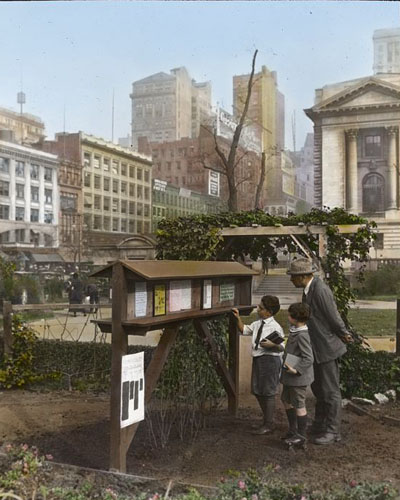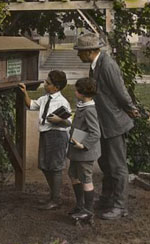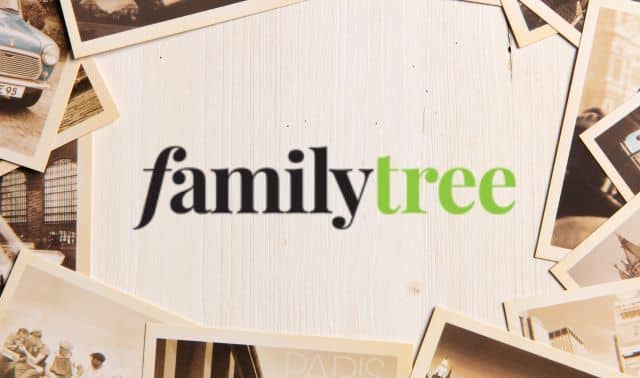Sign up for the Family Tree Newsletter Plus, you’ll receive our 10 Essential Genealogy Research Forms PDF as a special thank you!
Get Your Free Genealogy Forms
"*" indicates required fields
May is the month of gardens and Memorial Day, so I thought I’d take a peek into gardens of the past. On the Library of Congress website, I discovered this gorgeous color image that depicts an important moment in the history of 20th-century gardening.
While commercially successful color photography was still a few decades away, early 20th century photographers relied on artistic mediums to add color to their images. Even early daguerreotypists colored their photographs.
During the WWI period, hand-colored glass slides made everyday scenes come to life. In this lantern slide, two boys (one wearing roller skates) and a man read the notices for a garden.
They stand in Bryant Park, at 42nd Street and 5th Avenue in New York City, in August 1918.
Frances Benjamin Johnston (1864-1952) photographed this scene for us to illustrate a lecture to women’s gardening clubs. She was a famous female photographer who took portraits of well-known figures throughout her career. She was also a proponent of historic preservation. Sam Watters featured lantern slides by Johnston in his book Gardens for a Beautiful America, 1895-1935 (Acanthus Press, 2012).
The garden in this photo was part of the National War Garden Commission of 1918. While Victory Gardens are usually associated with World War II, they were also popular during World War I. People planted gardens in public places and at home. There were even rooftop gardens.
You can read more about these gardens and their history in Gena Philbert-Ortega’s From The Family Kitchen: Discover Your Food Heritage and Preserve Favorite Recipes.
Charles Lathrop Pack established The National War Garden Commission in August 1917. The war effected food production and he thought American’s could boost output by creating small gardens. It’s estimated that there were more than 5 million of these gardens during the war.
You can view other WWI-era color images on the Library of Congress website. Browse the Frances Benjamin Johnston collection to see other examples of her work.
If you have a photo of an ancestral garden, please submit it to me and I’ll post it here.
Solve your family photo mysteries with these books by Maureen A. Taylor:
ADVERTISEMENT






